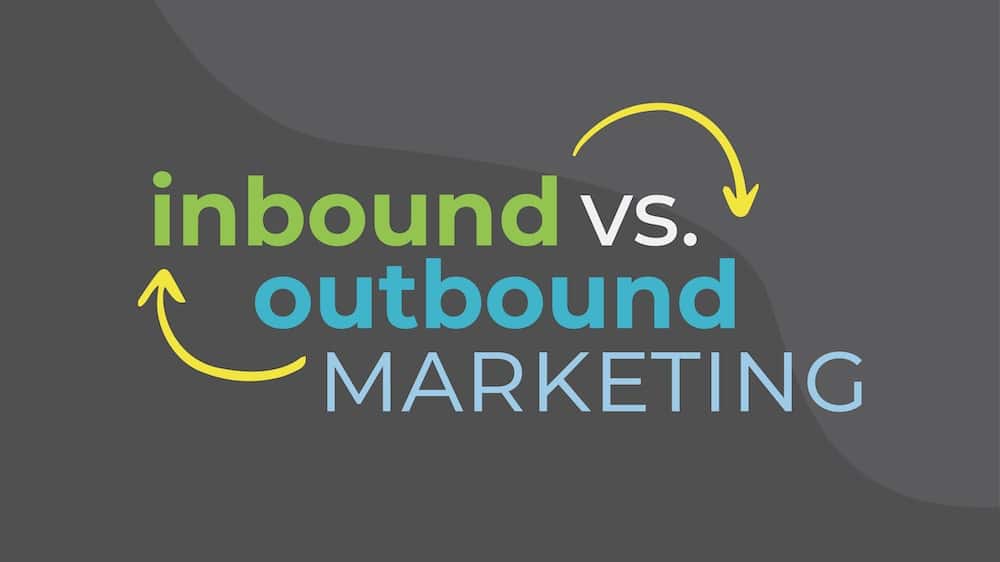In the digital marketing world, strategies are always changing, and that includes the ways in which you reach new customers. Traditionally, marketers used outbound marketing tactics to generate leads. The technological advances of the past couple decades, however, created a modern opportunity that became inbound marketing. Now that consumers are able to easily search the internet for what they need, experts have been advocating for companies to put more effort into their inbound strategies. Before we dive into the reasoning behind this, let’s define the two terms and explain inbound vs. outbound marketing.
What is outbound marketing?
Beginning with the traditional tactics, outbound marketing is a strategy that pushes your message out to a wide audience. Marketers then aim for a few conversions from that crowd. Examples of outbound marketing include billboards, radio ads, trade shows, and cold calling. They cast a wide net so the message is seen by more than just your target audience, which does not always translate into effective leads.
What is inbound marketing?
On the other hand, inbound marketing focuses on pulling consumers in rather than pushing a message out to them. This marketing tactic revolves around creating content that spreads brand awareness and is meant for your desired audience. Social media, blogs, videos, and helpful website content are all types of inbound marketing, designed to engage people who are interested in your industry and brand.
Which is more valuable?
While you shouldn’t completely remove outbound marketing from your strategy, inbound marketing actually has a higher ROI and is less expensive to do. Billboards and radio ads, for example, are costly, and you can’t ensure that your target audience will take notice. By positing on social media or creating useful blogs, you’re putting out content that your intended audience is already interested in.
Additionally, consumers are growing tired of outbound marketing. They see dozens or even hundreds of ads a day, utilize ad blockers, and toss out direct mail that doesn’t align with their interests. Paid online advertisements can also annoy consumers, even if it’s something they may want or need. In a world where thousands of companies are constantly pushing out information, it’s easy for your message to get lost. With inbound marketing, consumers are actively seeking out something regarding your service or product, and they can do it on their own time, making it a less-invasive strategy.
Measuring Results
Because it casts such a wide net and often times involves print ads, outbound marketing leads are hard to measure. Inbound marketing, on the other hand, is easier to track because it’s all done digitally. You can track important KPIs easily so you know how well your business is doing online.
Time and Effort
One perk of outbound marketing is that it doesn’t involve any maintenance. On the other hand, inbound marketing requires you to be up-to-date on industry trends and to regularly create new content to keep consumers engaged. But as long as you have the time and personnel, inbound marketing is worth the effort.
HubSpot put out a helpful article with points about the “Attract, Delight, Engage” model that discusses the content needed for each stage of the marketing funnel. You need to first attract consumers with content that pulls them in, but the work doesn’t stop there. After they purchase your product or use your service, continue to interact with them through e-newsletters, for example. In every step of your marketing plan, it’s worthwhile to compare inbound vs. outbound marketing campaigns.
Again, it’s important to reiterate that outbound marketing is not a bad thing—it just needs to be used in tandem with inbound marketing to ensure you’re getting a high ROI and increased customer base. For help with your marketing strategy and plan, turn to the experts at That’s My Idea Marketing. We’ve been helping businesses grow their online presence and reach new customers since 2003.

